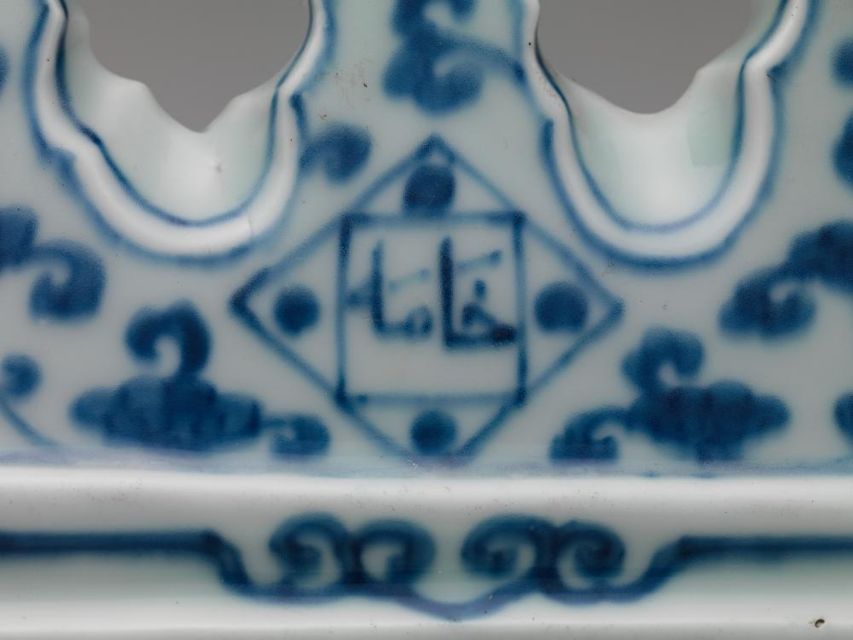'Pen' and 'holder'
On each side under the central peak is a diamond shaped cartouche. Within each diamond is a square that meets the border but does not break the line of the diamond. Within the squares are the Persian words khāmah 'pen' and dan 'rest' or 'holder' on either side, so 'pen holder' when read together.
The use of the Persian language and Arabic script on such Chinese objects would have placed the brush holder within the subcategory of Ming ceramics referred to as “Mohammedan” wares, a term coined by English scholars, which were most common during the Zhengde period. On many “Mohammedan wares” it is difficult to decipher the Persian / Arabic inscription since the calligraphic style is unique to decorators at Jingdezhen, the Ming dynasty’s porcelain capital. The cobalt color used in blue and white ceramics from Jingdezhen came from a cobalt mine in Qamsar, in the southwest of the city of Kashan. Such objects for office use were not made for export. Zhengde desk porcelains with Arabic and Persian markings have not been uncovered in the Topkapi Palace or the Ardebil shrine. Other porcelain items such as serving dishes and bowls with a Zhengde label and similar Persian and Arabic markings were found there.
Scholars widely understand that the brush rest, and other similar ones, were created for Muslim administrators, eunuchs at the Chinese court. Ali Ekber, a Muslim merchant, traveled from eastern Turkey to China in 1505 and recorded the process of manufacturing porcelain. He noted that the Emperor had converted to Islam. Ekber’s mention of Zhengde’s conversion is debated since the Emperor’s conversion is not recorded in Chinese Ming official histories. Although there are Persian inscriptions, the shape of the brush rest is traditional Chinese. Peaked mountain brush rests were first made in underglaze blue-and-white porcelain, with Arabic inscriptions, in the Yuan dynasty (1279-1368).
One may speculate that the use of Arabic, or Persian, was a way of personalizing the object for an individual called to serve far from their Persian origins. Such inclusion of the Persian language in Arabic script on a traditional Chinese object underlines the transcultural nature of the object where the interconnectedness between the most powerful empires often blurred the boundaries in the Early Modern World.
